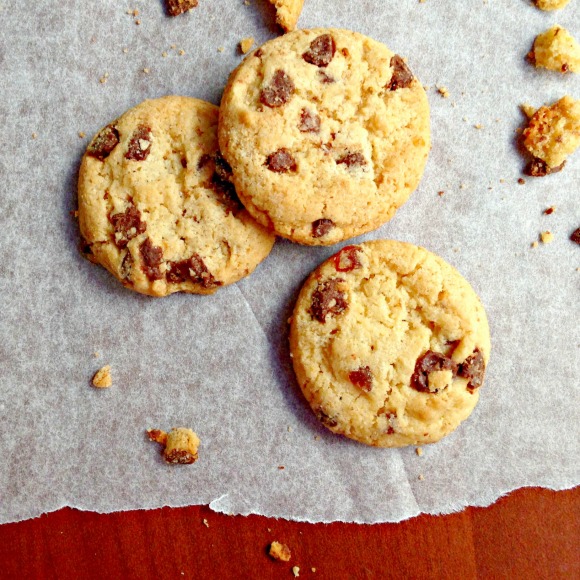
I have a serious weakness when it comes to cookies. Cookies are my Kryptonite. I choose cookies over human contact at least twice a week.
Because of this I have baked far more than my fair share of the crumbly morsels of magic and have lots of cookie recipes under my belt.
The way I see it, in the wonderful world of cookies there are two families – the soft, chewy cookies and their crunchy rounder cousins. In my eyes, both kinds of cookie have their merits and I don’t want to go around picking favourites. With that said, it is true that sometimes you want a chewy cookie and sometimes you crave the crunch. Luckily, this is where science comes in to play.
Any cookie recipe, whether it be for afghans, peanut butter cookies or good old choc chippies, can be used to make both a chewy or a crunchy cookie. All it takes to switch between the two is a little science.
There are three ingredients which can be altered to change the type of cookie you create: butter, egg and sugar.
Butter
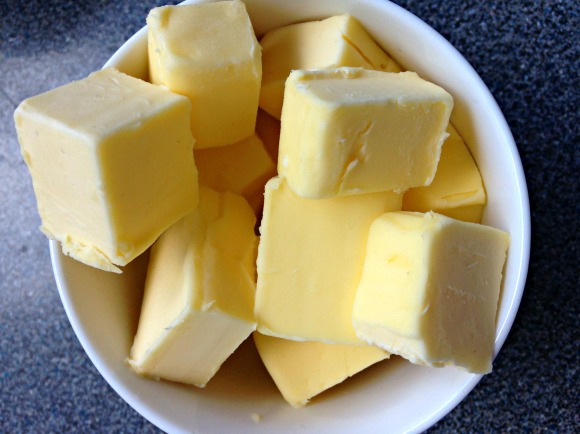
How many times have you popped your lump of butter into the microwave, punched in a random combination of numbers and pressed start, then opened your microwave door later to find that the fluffy soft butter you expected had transformed into bubbling butter juice? Figured it won’t make any difference? It does!
Melted butter = Chewy cookies
Softened butter = Crunchy cookies
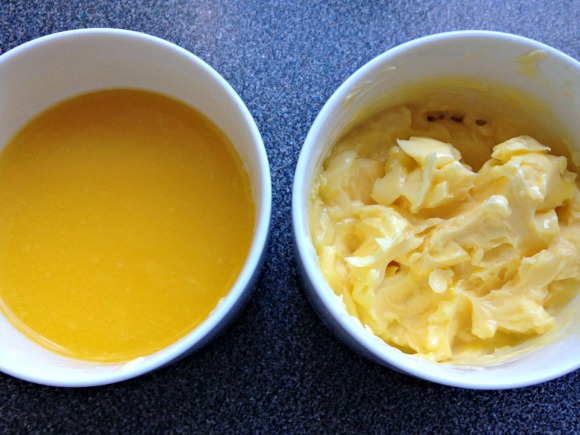
Why? I hear you ask.
When you beat sugar into softened butter it creates air bubbles in the batter. This is because the sugar crystals create little holes and the fat molecules trap air in them. When you bake the cookies these bubbles fill with carbon dioxide from the baking soda resulting in an airy, crunchier cookie.
Melted butter, on the other hand, doesn’t add to the structure of your cookie. This is because both the crystalline and the soft fats are liquid and so won’t trap any air. Butter in this form will just add delicious rich flavour and moistness to your cookie.
Egg
Lets talk about eggs ba-by, lets talk about you and me.
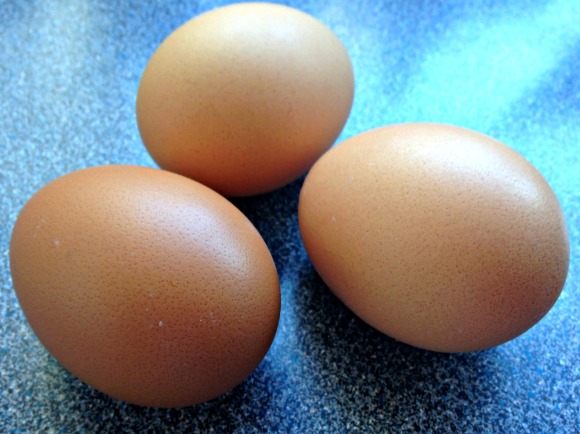
Eggs play a vital role in holding together your scrumptious cookie, and can be easily divided into two parts; the crunch maker and the orange balls of chew.
White = Crunchy cookies
Yolk = Chewy cookies
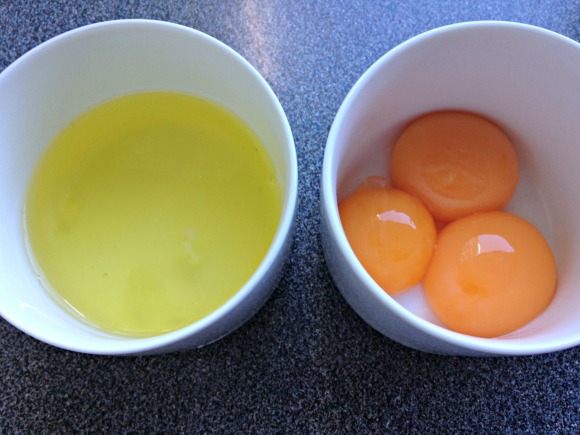
As any good gym buff knows, eggs are full of protein. When it comes to you cookies though, it is the water and fat in the eggs that are most important.
Egg whites contain a lot of water, which is great for the crunchy cookie lover. When water is combined with flour it makes gluten. This is a strong, stretchy bunch of connected proteins which hold up your cookie, making it taller and crunchier.
On the other hand, egg yolks are full of a bundle of fat. Gluten can’t form in fat, which means less will be formed, resulting in a softer, chewier cookie.
Sugar
Mmmm, sugar.
This is the ingredient that has us giggling like a tickled penguin when we bite into our freshly baked cookie. White, brown, caster, coarse, raw or powdered, as long as it isn’t an artificial sweetener it’s good right? Right. But the type of sugar you use also affects the chewiness of your cookie.
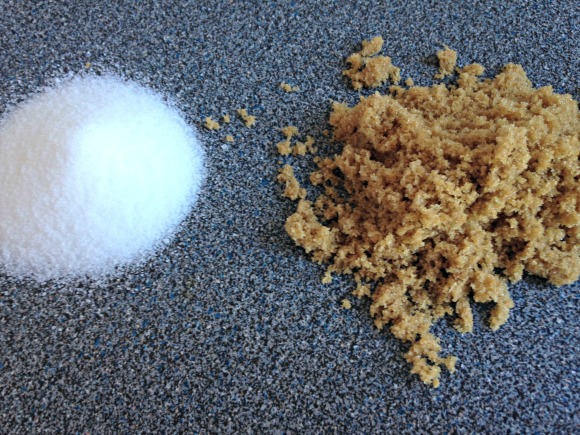
Brown sugar = Chewy cookies
White sugar = Crunchy cookies
I love brown sugar. I could eat it by the tablespoon. I do eat it by the tablespoon.
Brown sugar is mostly sucrose, along with some glucose and fructose. Glucose and fructose are hygroscopic, meaning they hold onto water. This means that when you use brown sugar it doesn’t release much water, resulting in less gluten formation. And what does less gluten mean? More chewy!
White sugar on the other hand is pure sucrose. Sucrose isn’t very hygroscopic at all, which means it gives up lots of water as it bakes. This means (you guessed it) more gluten formation and a crunchier cookie.
…
So there you have it, everything you need to make batches of cookies Nigella would be proud of.
So get baking!
…
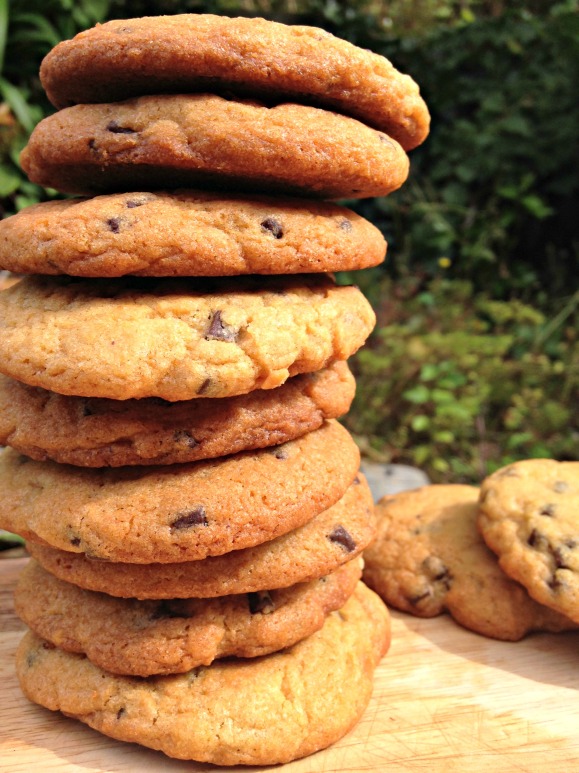
Here is one of my personal favourite cookie recipes
Chocolate Chip Cookies
- 200g softened butter
- 1 cup brown sugar
- 1/2 cup caster sugar
- 3 eggs
- 2 tsp vanilla essence
- 2 cups flour
- 1 tsp baking powder
- 1 tsp salt
- 1/2 cup chocolate chips
Cream butter and sugars, then add eggs and vanilla essence.
In a separate bowl combine flour, baking powder and salt.
Pour dry ingredients into butter mixture and fold a few times. Add chocolate chips and fold again until just combined. Don’t over mix!
Refrigerate for 12-36 hours. I understand that this isn’t always easy (or possible) to do. When you need cookie, you need cookie. But it really does make a huge difference to how delicious your cookie is. It will be worth it i swear!
Form into evenly sized balls and bake at 180°C for 10-12 minutes or until golden brown.
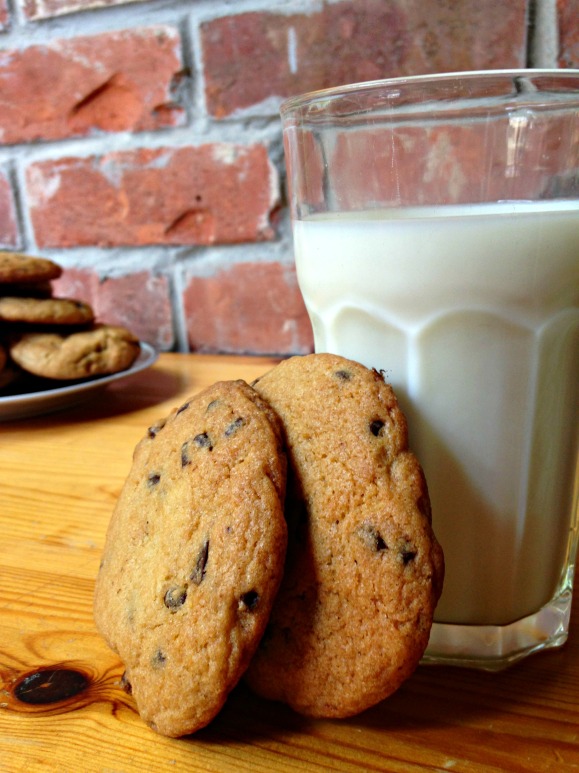
Now pour yourself a tall glass of milk and enjoy, after all, cookies are best served warm!

This is a FABULOUS post! From one cookie lover to another – thank you for being the first person ever to enlighten me on how I can moderate my chewy-crunchy ratio! (And bonus points for being funny while doing it!). Cheers!
Thank you so much! I love cookies so much I’m just glad I can share the love!
they look yummy!
Brilliant post!
Baking and science….my two favorite things!!! I once based a science project for my daughter on how different leaveners affect a chocolate chip cookie…the same recipe with the only variable being the leavener. Baking soda, baking powder, bakers ammonia and then one with no leavener. They were all so different, but surprisingly all very good. Best science project ever….and yes she (we) got an A!!! Thanks for a great post!!
This is what I’m looking for !! Thank you so much , may I translaete this into my language and share with friends? I will link back to your blog.
Thank you! Of course you can, I’m glad you found it useful!
[…] wee while back I wrote a post about baking chocolate chip cookies and how to use science to make them crunchier or chewier. It was pretty popular, so I thought, why […]
Thank you for what seems to be an excellent understanding of the importance of ingredients. So many other sites provide guesses and gimmicks (like “smacking” the cookies half way through baking to flatten them and make them crispier).
I conclude that it is also critical to have baking soda instead of baking powder to get a crispier cookie.
As a curiosity, is it possible to cook a cookie and how would that compare to a baked cookie?
Thank you!
Cook a cookie, do you mean in a pan? I imagine it is possible, but would herald quite different results. Baking a cookie in the oven results in an evenly cooked, uniform cookie, whereas cooking something on the element heats up the outside much faster than the inside, which is how we can achieve things like rare meat. So I guess if you cooked your cookie, instead of baking it, it would be crunchy on the outside and more doughy on the inside. Sounds delicious to me!
Thanks heaps Ali, really helpful, easy to follow, love your writing 🙂
Amazing thx!